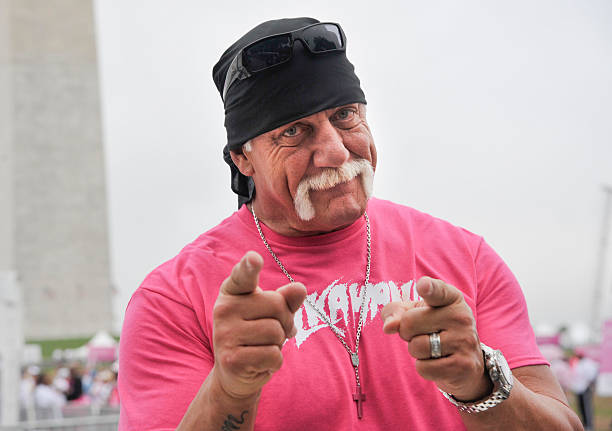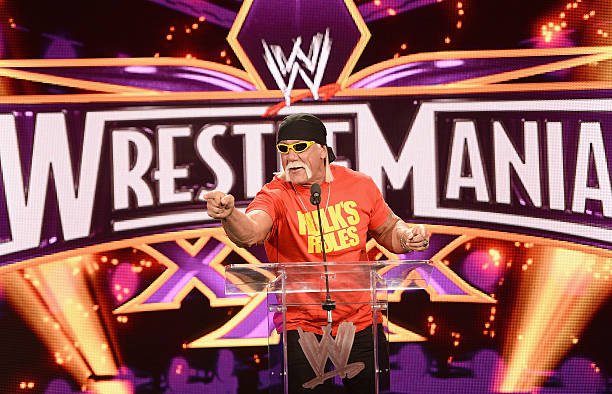Hulk Hogan, one of the most famous wrestlers in history, amassed a fan base so loyal to him that it was dubbed “Hulkamania.” He was formerly the highest-paid performer in the WWE, having won 12 world titles over the course of his 33-year career: six with World Championship Wrestling and six with World Wrestling Entertainment (WWE).
However, Hogan is known for much more than just wrestling. He passed away in Clearwater, Florida, on Thursday, July 24, at the age of 71. Following his career’s termination due to drug abuse, he started a difficult new path that included his reality show Hogan Knows Best, the book Hollywood Hulk Hogan, and, ultimately, his return to wrestling.
Here are seven facts you might not know about the legendary wrestler and his illustrious career. Read the full Hulk Hogan Biography, Wrestling Career, Controversies, Death, and Legacy
7 Surprising Facts You May Not Know About Hulk Hogan

Hogan’s ring moniker originated on a chat show.
In his early career in the late 1970s, Hogan, who was born Terry Eugene Bollea in 1953, fought as Terry Boulder, Super Destroyer, and Sterling Golden, among other personas. However, Hogan was christened the Hulk by the presenter of a chat show featuring actor and bodybuilder Lou Ferrigno, who played the Incredible Hulk in Marvel comics on television. Ferrigno was smaller than the 6-foot-7, 300-pound wrestler.
He became Hulk Hogan in 1979 after being convinced to take on an Irish identity by WWE manager Vincent McMahon Sr. His initial response was doubtful. “Wow, Hulk Hogan sounds like a Hulk Hoagie or something,” he said to me. But the name remained. It was successful, and the name’s durability is astounding.
Hogan’s initial hobby was baseball.
Hogan, who grew up in Tampa, was determined to become a major league pitcher. His Interbay Little League team advanced to the national regional finals in 1966, but they were unable to advance to the Little League World Series because Hogan failed to hit the game-winning home run.
The teenager attracted the attention of MLB scouts right away, but in his senior year of high school, he sustained a throwing elbow injury. He lost his chance to dominate the pitcher’s mound. “It was the best thing that ever happened to me, because I segued into wrestling,” Hogan said on the website of Major League Baseball. “Once my arm wasn’t what it was, I began pursuing the wrestling fantasy around, and it eventually came true. “However, baseball was my first love.”
He began a music career.
In junior high, Hogan started playing the guitar. When he told Vice, “I wasn’t a big sports guy,” and “I was into music and had long hair.” He soon started playing bass guitar in bands, most notably Ruckus. They sang maybe five original songs in addition to rock ‘n’ roll covers. “Our band was so tight,” said Hogan. “The whole building would move when we played.”
They were unquestionably headed in the right direction for success in music. “We were out there playing for money to get on our feet and get ready to do what we needed to do,” he stated to me. They were given the chance to tour with Blackfoot and Mother’s Finest, but the other band members chose not to because they had families.
Before a joust with “Macho Man” Randy Savage in October 1985, Hulk Hogan poses in front of a crowd at Toronto, Ontario, Canada’s Maple Leaf Gardens.

Hogan used to be scared of wrestlers
Although he had always been a “huge” fan of wrestling, he didn’t feel comfortable in the scene. “As a kid, I was scared to death of them because back in the day, wrestlers were very protective, and if you called wrestling fake, they would punch you in the face,” Hogan stated to Vice. “Back in the day, there were no lawyers, no lawsuits, and no cell phones, so no one could take pictures—so wrestlers could do whatever they wanted.”
But then a humorous thing happened. Some wrestlers started attending his concerts. Word got around in the neighborhood. “All of a sudden, before I knew it, there were a bunch of wrestlers at our gigs,” he recalls. Eventually, I worked up the guts to inform Oliver Humperdink, who was managing superstar Billy Graham, that I wanted to try out for the wrestling world. We’ll give you a tryout, he replied. “Yeah, okay, come on down.” “CRACK, I broke my leg.”
Hogan’s sudden injury led to a speedy recovery.
Hogan received his parents’ approval following his first title. It was a watershed event in wrestling history when he won his first title in 1984 after memorably escaping the Iron Sheik’s “camel clutch.” Hogan’s triumph was especially significant because his parents were in the crowd.
Before deciding to enter the ring, he studied economics and management at the University of South Florida and seriously considered music. “I finally quit for good to be a professional wrestler,” according to him. “It just killed both of my parents.” It simply wrecked their aspirations and plans for me. So we had a poor relationship for quite some time.”
But the triumph at Madison Square Garden altered everything. “My dad and mom came to the dressing room, and they both said how proud they were of me,” he said. “They were ecstatic that I decided to become a wrestler. So that was the best moment of my career.”
His WrestleMania III bout against Andre the Giant transformed the industry.
Hogan faced Andre the Giant in 1987 in front of 90,000 people in the Pontiac Silverdome in Detroit, and the fight is widely regarded as one of the most memorable in wrestling history. Bleacher Report described the bout as the “first truly epic match in WrestleMania’s long and illustrious history” because it was the “epitome of perfect booking” and both wrestlers were “suited for a match of that magnitude.”
While Andre had a far longer run than Hogan, the newcomer prevailed with a bodyslam and leg drop. “When I lifted that 7-foot-4, nearly 700-pound, huge, stinking behemoth above my head and smashed him down in front of 93,000 people, it sent tremors around the world,” Hogan said. “It was the best thing I’ve ever done in the wrestling ring. It was a one-time transaction, brother.” I’m glad that giant went up and then crashed down.”
In actuality, Andre weighed closer to 500 pounds, but it didn’t matter. Hogan’s newfound reputation as the “slam heard ’round the world” was attributed to popularizing the sport.
Hulk Hogan and “Macho Man” Randy Savage attended a Las Vegas convention in 1996.
Randy Savage’s 2003 song “Be a Man” fueled their real-life feud. “The story goes that Hogan ended up stealing [Savage’s ex-wife, Miss Elizabeth] away, and she died of a drug overdose, and he blamed it on Hulk,” said Bill Edwards, founder of the Big3 record label. “He always wanted to return to the ring and fight for real, but Hulk refused. Hence, ‘Be a Man.’ ” The entire point of the song was to call him out.”
That’s clear from lines like “Used to be hard, Hulk; now ya done turned soft.”
After an eight-year feud, the wrestlers reunited after encountering each other at a doctor’s office in Tampa. “I just thank God that we got back together before he passed away,” Hogan said of Savage, who died in May of 2011.
from GistReel https://ift.tt/aQxpXZN
via IFTTT


0 Comments
Post a Comment